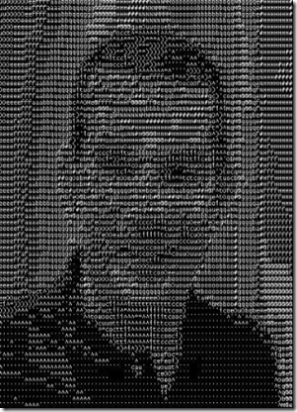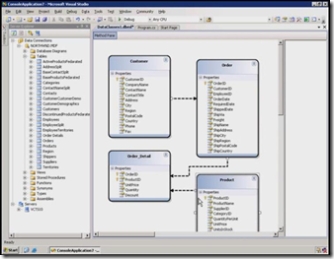Community Convergence XXII
Community Convergence in a nutshell: The March CTP for Visual Studio, creating Art with LINQ, videos showing how to write LINQ to SQL, interviews with core members of the Microsoft C# team, and much more! Read on to learn all.
Overview
Welcome to the twenty-second Community Convergence, the March CTP issue. I'm Charlie Calvert, the C# Community PM, and this is where I publish information about the C# community and the C# development team.
The big news is the release of the March CTP. If you haven't done so already, be sure to download and install a copy of this relatively stable and remarkably innovative product. There is also a video available which describes many of the new features found in this CTP. More information on CTP's is available at the end of this post.
What's New from the C# Team
All the links in this section are to articles or videos by members of the core C# team that creates the compiler, the IDE and LINQ. The videos feature either interviews with key team members, or depictions of writing LINQ to SQL database code in Visual Studio Orcas.
Figure 01: LINQ Art! A Portrait of Wes Dyer as a Hotshot LINQ Developer!
- A video of the members of the PM team who are driving the core C# features in Visual Studio Orcas. Included in the video are Karen Liu, Luca Bolognese, Dinesh Kulkarni, and Mads Torgersen.
- Wes Dyer, a developer on the C# team, has written a wonderful program showing the unexpected things you can do with LINQ, including creating original art!
- Wes Dyer on writing code that just works.
- Luca Bolognese's great short post entitled "Which Type Should I Use in C# to Represent Numbers?"
- I made a video showing the basics of LINQ to SQL. There are no talking heads in this video, just shots of me writing code in the Orcas CTP.
- A post that describes in some depth the material covered in the Basics of LINQ to SQL video.
- Two videos of Visual Studio that focus on LINQ to SQL Joins and One-to-Many Relationships
- I've written a post on Joins and One to Many Relationships with LINQ. This post is designed to accompany the video on on the same topic.
- My interview with Anders Hejlsberg is still available.
Figure 02: Nothing but Code! Three of the four videos I contributed this week show how to write LINQ to SQL programs in Visual Studio Orcas.
What's New in C#
- Scott Guthrie on URL Rewriting.
- Chuck Jazdzewski writes a follow up to his excellent post entitled "Fatherly Advice to New Programmers."
- The sage of Microsoft, aka as Chuck Jazdzewski, writes on best practices for answering questions in Forums.
More on CTP's
A CTP is a Community Tech Preview. Orcas is the next release of Visual Studio. Each release of Orcas is designed to keep you up to date with the progress being made towards the next release of Visual Studio. A beta is designed to reach a certain quality bar, while a CTP is simply designed to preview up coming technology. Nevertheless, the current CTP is remarkably stable.
The March CTP is an important release of Orcas because it contains a fairly stable release of LINQ to SQL. LINQ is designed to introduce querying as a first class citizen in the C# language. LINQ to SQL provides the ability to query relational databases, while LINQ to XML gives developers the ability to query XML. A third technology, LINQ to Objects, provides an API for querying data of various kinds residing inside a C# program.
Comments
Anonymous
March 01, 2007
You've been kicked (a good thing) - Trackback from DotNetKicks.comAnonymous
March 02, 2007
Charlie What a great Job you are doing!!!, keep doing this please, its a great help for us to know all this information as easy as you put it, by the way i wander if you have some kind of opml that we can use with similar information that you provided, e.g. including the c# team (Anders Hejlsberg blog's will be great because i can't find it) Thanks.Anonymous
March 03, 2007
Hi Charlie, I also just wanted to say how great your resources are, I have been at your site almost constantly for the past few days. Just finishing up a fresh Vista Ultimate install on 1.5 year old hardware, with an Experience Score of 4.0 no less, and a fresh install of VS Orcas (just finishing up the SQL Server Express SP2 install now). Thanks for all the hard work, this is great!Anonymous
March 11, 2007
Hi, do you have any idea for set transparent swf file in c#.net forms? i did swf file to my form by axshockwave but how set it transparent? good luckAnonymous
March 15, 2007
What is two step compilation in .NetAnonymous
June 16, 2007
First time here on your site. I am delighted to find your wonderful website online. Please visit my homepage:Anonymous
July 14, 2008
Extracting acetaninophen from ultracet. Ultracet.

